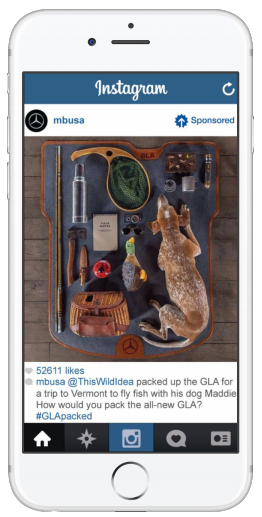Instagram content best practice: winning examples from global brands
This month saw the release of the 2016 cross-border business handbook: Going global with Facebook.
This month saw the release of the 2016 cross-border business handbook: Going global with Facebook.
This month saw the release of the 2016 cross-border business handbook: Going global with Facebook. It is a good body of research for budding social media marketers looking to use such services to connect with consumers across international regions.
What with the data in the report having been collected by Facebook and the title of the document seemingly only referring to Facebook, you’d be forgiven for thinking that the research covered anything other than Mark Zuckerberg’s flagship service.
But it is the Instagram-related trends buried deep in the latter pages which I wanted to cover today.
After all, there’s more to social media than Facebook. Instagram is proving a successful service for brands and organisations to engage with their audiences. And in the process, some are using content in a number of interesting ways.
In order to promote their new compact SUV, the handbook details how Mercedes-Benz recently took to Instagram to leverage its rich visual functionality and highlight the space-saving design of the GLA vehicle.
Taking influence from the widely-used #ThingsOrganizedNeatly hashtag, the brand did just that. They used the GLA’s custom cargo mat on which to organize items relevant to trips that potential customers would make. These sponsored posts were also cross-targeted with users on Facebook.
The campaign resulted in a 14 point lift in recall for Mercedes-Benz Instagram ads, a 54% increase in site visits from both Instagram and Facebook ads, as well as a 580% increase in site visits when combined with Facebook direct response ads.
Shaping marketing campaigns around the seasons is nothing new, but airline Qantas looked to Instagram to connect with a younger audience itching to travel and returning home this summer.
 According to the report, Qantas are the first Australian brand to run a video and photo campaign on the service. They sought to present ‘quintessentially summer moments’ such as surfing, cricket and going on road trips with additional 15 second video clips of real people reuniting at airports during the season.
According to the report, Qantas are the first Australian brand to run a video and photo campaign on the service. They sought to present ‘quintessentially summer moments’ such as surfing, cricket and going on road trips with additional 15 second video clips of real people reuniting at airports during the season.
In response, the brand saw a 30 point lift in ad recall and a 4 point lift in message association.
The Chinese broadcaster successfully used Instagram to recycle the best of their existing content and to reach a US audience.
By curating memorable moments from a range of CCTV News documentaries and films into 15 second Instagram blips, The handbook details how they managed to portray themselves as a destination for quality and wide-ranging world news with a unique perspective.
The videos really connected with the younger end of the US audience, reaching 3.7m people and seeing a 6 point lift in ad recall among 25-34 year-olds as well as a 4 point lift in brand awareness.
Beauty product subscription service, Birchbox, have also recently used short video clips on Instagram to drive engagement and promote their boxes.
The brand adopted the recent online video trend of ritual unboxing and showed their actual staff members receiving boxes and trying out the products they contain. The videos also reflected the tropes established in “let me show you” style blog posts.
As a result of the campaign, Birchbox saw a 12 point lift in brand awareness and a 26 point lift in ad recall.
The above examples were just a few of the brands featured in the report which have successfully made use of Instagrams’ specific content-led functionality. The handbook also cites what it considers to be best practice for using the service…